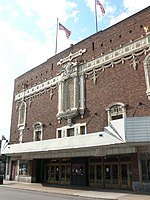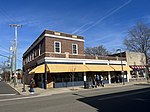Virginia Commission for the Blind
Buildings and structures in Richmond, VirginiaColonial Revival architecture in VirginiaGovernment buildings completed in 1940Government buildings on the National Register of Historic Places in VirginiaNational Register of Historic Places in Richmond, Virginia ... and 1 more
Richmond, Virginia Registered Historic Place stubs

The Virginia Commission for the Blind is a historic building at 3003 Parkwood Avenue in Richmond, Virginia. It is a U-shaped two-story brick building with Colonial and Georgian Revival features. It was designed by the prominent Virginia architect J. Binford Walford and completed in 1940. It is prominent as the principal place associated with the work of Lucian Louis Watts, a leading force in the state to improve the social welfare its blind population.The building was listed on the National Register of Historic Places in 2016.
Excerpt from the Wikipedia article Virginia Commission for the Blind (License: CC BY-SA 3.0, Authors, Images).Virginia Commission for the Blind
Parkwood Avenue, Richmond Museum District
Geographical coordinates (GPS) Address Nearby Places Show on map
Geographical coordinates (GPS)
| Latitude | Longitude |
|---|---|
| N 37.551666666667 ° | E -77.479722222222 ° |
Address
Parkwood Avenue 3003
23221 Richmond, Museum District
Virginia, United States
Open on Google Maps









